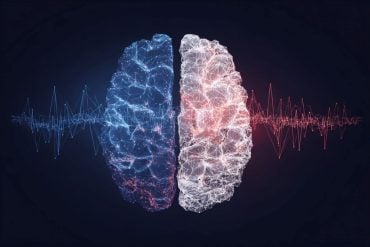Summary: Scientists have discovered that mutations in the EPG5 gene—known for causing the rare childhood disorder Vici syndrome—also increase the risk of Parkinson’s disease and dementia later in life. The gene plays a crucial role in autophagy, the process by which cells clear out damaged material.
When this system fails, harmful proteins build up, damaging nerve cells over time. The study reveals a direct biological link between early neurodevelopmental disorders and late-onset neurodegenerative diseases, offering hope for shared therapeutic targets.
Key Facts:
- Shared Mechanism: EPG5 mutations disrupt autophagy, connecting rare childhood disorders to adult neurodegeneration.
- Broader Effects: Individuals with EPG5 errors can develop Parkinson’s or dementia in adolescence or adulthood.
- Therapeutic Insight: Findings highlight how studying ultra-rare diseases can guide treatments for common neurological conditions.
Source: King’s College London
Errors in a gene known to cause a serious neurodevelopmental condition in infants are also linked to the development of Parkinson’s disease in adolescence and adulthood, according to new research.
The study, published in the Annals of Neurology, looked at a gene called EPG5. Errors in this gene are already known to cause Vici syndrome – a rare and severe inherited neurodevelopmental condition that presents early in life and affects multiple organ systems.
Now researchers at King’s College London, University College London (UCL), the University of Cologne and the Max Planck Institute for Biology of Ageing have found that errors in the same gene are linked to changes in nerve cells that lead to more common age-related conditions like Parkinson’s disease and dementia.
Professor Heinz Jungbluth, Professor of Paediatric Neurology at King’s College London and lead and co-senior author of the study, said: “This research, supported by patient organisations, was prompted by our earlier observation of an apparent increased Parkinson’s disease risk in relatives of children with Vici syndrome, after our team at King’s had found EPG5 to be a driver of this condition.
“Our work shows that, whilst rarely considered a priority, research into (ultra)rare conditions such as Vici syndrome (where fewer than 10 children are currently known to have the condition in the UK) may provide vital insights into much more common disorders and have substantial public health benefits.
“Understanding the causes of these devastating and often life-limiting diseases is essential for therapy development and thus offers hope for patients and their families.”
In the largest study of its kind to date, the team of scientists analysed clinical and genetic data from 211 individuals from across the world with rare errors in EPG5. They found that the effects of these genetic errors are broader and more variable than previously known – while some individuals had life-limiting forms of Vici syndrome identified before or shortly after birth, others showed much milder symptoms, including delay in movement, speech, and learning.
The researchers also discovered that some of the patients included in the study went on to develop a breakdown of nerve cells in adolescence or early adulthood that led to Parkinson’s disease and dementia. Brain scans analysed in some cases showed additional iron build-up in the brain, a feature of other, closely linked neurodevelopmental disorders.
Dr Reza Maroofian, co-first author of the study from the UCL Queen Square Institute of Neurology, said: “Our findings link EPG5 dysfunction to Parkinson’s disease, highlighting how neurodevelopmental and neurodegenerative disorders can be mechanistically interconnected and add to a growing list of such conditions.
“This study underscores how insights from rare paediatric brain disorders can inform our understanding of more common adult-onset neurodegenerative diseases, such as Parkinson’s and dementia.”
The EPG5 gene is involved in an important cellular process called autophagy, where the cell breaks down unwanted or damaged components and either recycles them into new parts or disposes of them. The protein made by EPG5 is involved in the last stage of this process – attaching the parts for disposal to the cell’s waste disposal unit for removal from the cell.
To explore the biology underpinning their findings, the researchers used patient-derived cells and model organisms, including mice and the tiny roundworm C. elegans, and introduced errors into EPG5.
These experiments showed that genetic errors in the gene disrupt the cell’s ability to clear damaged components from the cell, leading to the build-up of proteins closely associated with Parkinson’s disease.
Professor Jungbluth, who is also a Consultant Paediatric Neurologist at Evelina London Children’s Hospital, Guy’s and St Thomas’ NHS Foundation Trust, said: “Using the example of EPG5, our findings suggest a life-time continuum of early-onset neurodevelopmental and late-onset neurodegenerative disorders, and more specifically an intriguing link between aberrant nerve development and degeneration linked in the same fundamental cellular mechanism preserved throughout different species.”
Dr Manolis Fanto, Reader in Functional Genomics at King’s College London and co-senior author of the study, added: “This project highlights the importance of collaboration between basic and clinical neuroscientists to unravel the complex mechanistic consequences of inherited genetic conditions throughout all life stages.”
The study provides new understanding of how errors in autophagy can underpin a range of lifelong neurological conditions and may help pave the way for future treatments that target these shared drivers of disease.
Key Questions Answered:
A: Vici syndrome is a rare inherited neurodevelopmental disorder caused by mutations in the EPG5 gene. It affects multiple organ systems, including the brain, muscles, heart, and immune system, leading to severe developmental delays and other complications that usually appear early in life.
A: Errors in EPG5, long known to cause Vici syndrome in infants, are also linked to Parkinson’s disease and dementia in later life.
A: EPG5 controls how cells dispose of damaged material; when disrupted, proteins accumulate and harm neurons, leading to neurodegeneration.
A: It bridges the gap between rare pediatric brain disorders and widespread adult diseases, revealing shared biological pathways that could be targeted by new treatments.
About this Parkinson’s disease, Vici syndrome, and genetics research news
Author: Joanna Dungate
Source: King’s College London
Contact: Joanna Dungate – King’s College London
Image: The image is credited to Neuroscience News
Original Research: Open access.
“Mutations in the Key Autophagy Tethering Factor EPG5 Link Neurodevelopmental and Neurodegenerative Disorders Including Early-Onset Parkinsonism” by Heinz Jungbluth et al. Annals of Neurology
Abstract
Mutations in the Key Autophagy Tethering Factor EPG5 Link Neurodevelopmental and Neurodegenerative Disorders Including Early-Onset Parkinsonism
Objective
Autophagy is a fundamental biological pathway with vital roles in intracellular homeostasis. During autophagy, defective cargoes including mitochondria are targeted to lysosomes for clearance and recycling.
Recessive truncating variants in the autophagy gene EPG5 have been associated with Vici syndrome, a severe early-onset neurodevelopmental disorder with extensive multisystem involvement. Here, we aimed to delineate the extended, age-dependent EPG5-related disease spectrum.
Methods
We investigated clinical, radiological, and molecular features from the largest cohort of EPG5-related patients identified to date, complemented by experimental investigation of cellular and animal models of EPG5 defects.
Results
Through worldwide collaboration, we identified 211 patients, 97 of them previously unpublished, with recessive EPG5 variants. The phenotypic spectrum ranged from antenatally lethal presentations to milder isolated neurodevelopmental disorders.
A novel Epg5 knock-in mouse model of a recurrent EPG5 missense variant featured motor impairments and defective autophagy in brain areas particularly relevant for the neurological disorders in milder presentations.
Novel age-dependent neurodegenerative manifestations in our cohort included adolescent-onset parkinsonism and dystonia with cognitive decline, and myoclonus. Radiological features suggested an emerging continuum with brain iron accumulation disorders.
Patient fibroblasts showed defects in PINK1-Parkin-dependent mitophagic clearance and α-synuclein overexpression, indicating a cellular basis for the observed neurodegenerative phenotypes. In Caenorhabditis elegans, EPG5 knockdown caused motor impairments, defective mitophagic clearance, and changes in mitochondrial respiration comparable to observations in C. elegans knockdown of parkinsonism-related genes.
Interpretation
Our findings illustrate a lifetime neurological disease continuum associated with pathogenic EPG5 variants, linking neurodevelopmental and neurodegenerative disorders through the common denominator of defective autophagy.







